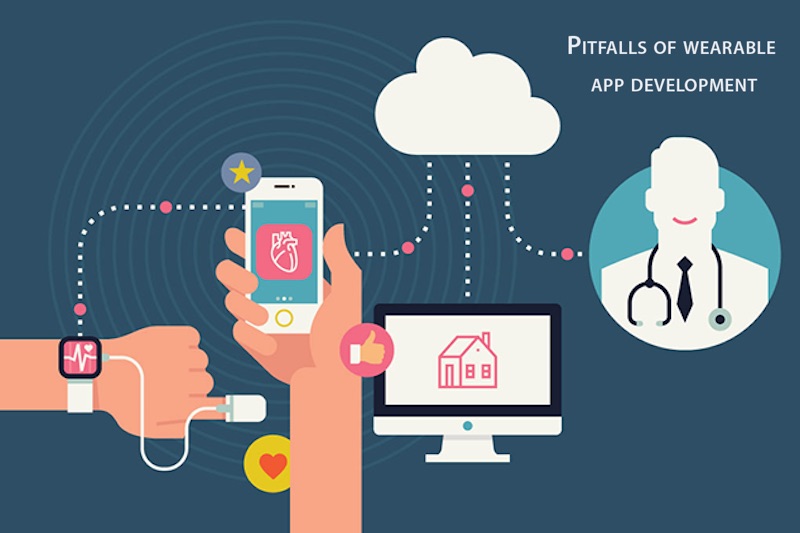Pitfalls of wearable app development

The market for wearable tech is on the rise. Be it fitness bands or AR glasses, these body worn technologies are set to dominate a market that is fast growing and evolving with each new development despite an underwhelming start.
These devices call for apps that are intuitive to use, while having constrains of limited screen size, functionality and battery life, which makes wearable app development a challenging task.
Lets take a look at few of these challenges.
1. Data Privacy and Security.
Rackspace reports that 51% people didn’t use wearables due to security concerns. The problem is even more critical in wearable devices as most of these depend on data sharing for functionality. Developers should keep in mind these concerns and take proper measures to protect sensitive information.
2. User Interface
Small screen size leads to simpler user interface making it important that it gets due attention. A proper UI is what’s most important to users as that is what they’ll see. One should always go for speech-focussed commands and passive data collection, minimising the details on the interface and making it quick and simple.
3. Platform
A wearable app must have cross platform compatibility. All wearable apps need to be portable to different platforms as most people use multiple devices which are not necessarily using the same platform. If a developer confines to the native platform, he shortens the reach of his app.
4. Functionality
Developers have to predict the needs of the end-user and add desirable functionality while maintaining ease of use and mobility. To keep the end user satisfies, it is necessary for developers to have a firm grasp of user intention and behaviour. Merely replicating a mobile app is not recommended.
5. Updates
Wearable technology is changing at a fast rate with new updates and upgrades coming every now and then. It is necessary that developers adapt to new devices and APIs that come with those devices to stay up to date else they will go obsolete at some point of time.
6. Tethering
Most wearables are tethered devices. Developers must always consider what happens when the device goes out of range or the phone battery dies.
7. Optimisation for battery usage
Most wearables work on small batteries which makes it important that developers keep battery usage in mind lest their apps should drain the battery faster. Simply put, if an app takes up a lot of power, hit will get deleted.
A good wearable app successfully takes care of all these pitfalls while maintaining its core roles and functionality. Avoiding these constrains should become a natural habit for developers who intend to create apps for wearable technology.
It is highly recommended that one completely understands the hardware that is going to run these apps before taking up a project for wearable app development. But despite these obvious pitfalls, the wearable app market is predicted to grow with the number of devices that come out and are adopted by the masses. Wearable app development shows true potential in what could be the technology of a fast approaching future.